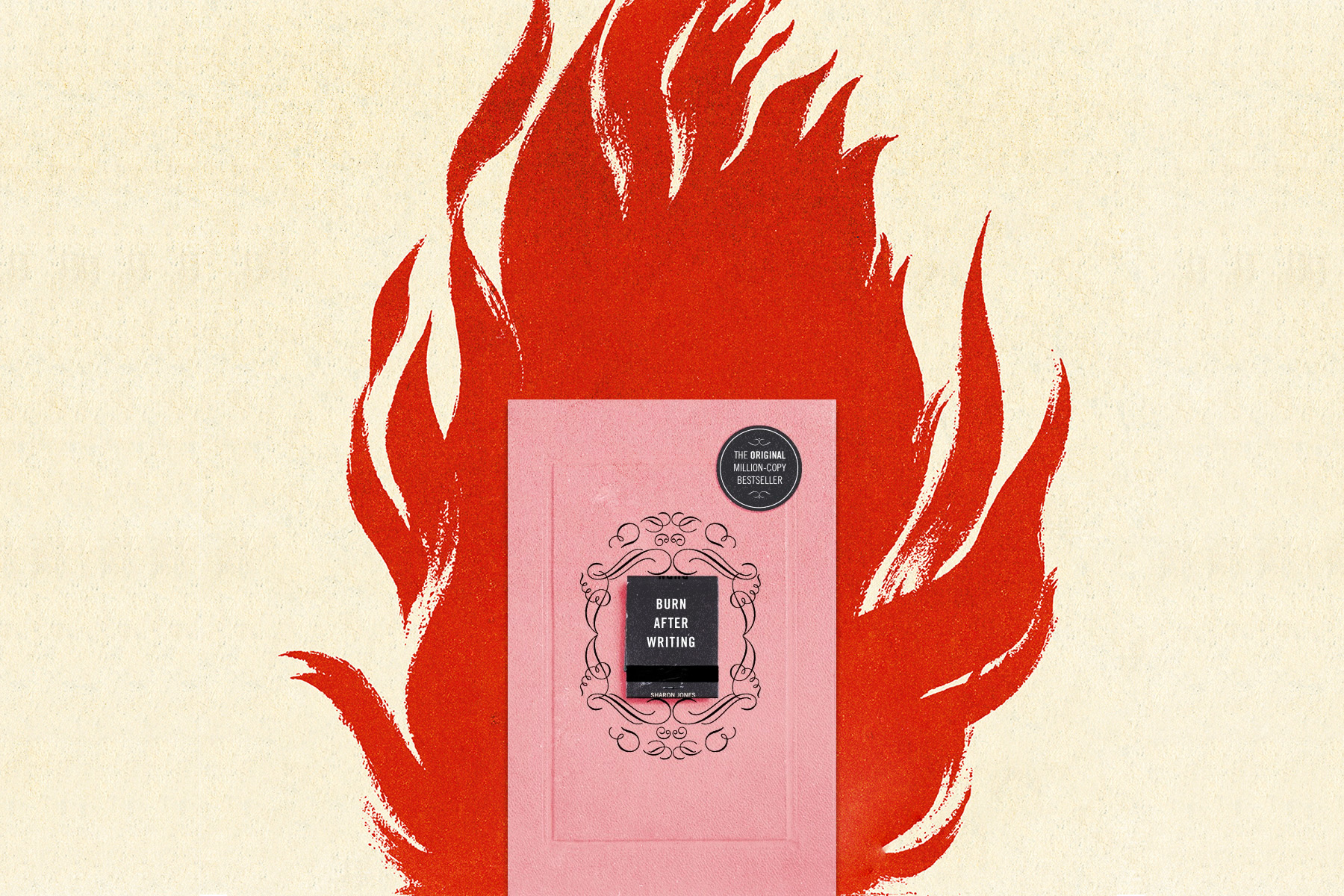
- Home |
- Search Results |
- #BurnAfterWriting: How an anti-social media journal became a TikTok phenomenon
#BurnAfterWriting: How an anti-social media journal became a TikTok phenomenon
Burn After Writing has become an international bestseller after taking over social media. Here, too-old millennial Stephen Carlick finds out if it will change his life, too.
This past month, I’ve been thinking a lot about my past, present, and future: the long-lost childhood possession that I would love to see again (a tabletop model railroad my father and I built together when I was eight); the thing I should let go of (self-doubt); the one thing I’m most concerned about (will I ever get to retire?).
I’m not the only one, either. Burn After Writing – a workbook-style journal with 150 pages of personal questions and prompts designed to challenge your self-perception and discover “how honest you can be when no one is watching” – has sold more than one million copies worldwide. This May, the book enjoyed a brand new UK printing by Ebury (and an illustrated version is out in August). Its first publication run in France earlier this year, of 120,000 copies, sold out in less than a month. And it’s blowing up in America, too: at the time of this writing, it sits at number 68 on Amazon.com’s top 100 best-selling books.
First published in 2014 by British graphic designer Sharon Jones, Burn After Writing was intended to reverse the trend of using social media as “one giant confessional”. Jones meant the book to be kept private: upon its completion, you could bin it, hide it away, or do exactly as the title suggests. The last thing you should do is share it.
What to make of the fact that the breaking of the book’s primary rule (social media sharing) is also the cause of its international success?
Technically, then, you shouldn’t have read that bit at the start – or rather, I shouldn’t have written it. Yet I’m not alone there, either; on TikTok, the hashtag #burnafterwriting has 84.5 million views and counting, a statistic that explains the book’s sudden ubiquity. As the book sprouts new language editions across the world, new posts proliferate across the social media platform. Young people – mostly women between their mid-teens and mid-twenties – are sharing photos of the book’s pages: usually before writing, where prompts such as the aforementioned “The long-lost childhood possession that I would love to see again” and “The thing I should let go of” sit alongside “If I had two weeks to live, I would _____” and “The one word I would use to describe my relationship with my mother”; but sometimes after, too. It’s not uncommon to finds posts of a page, or even the whole book aflame.
Though some posts are accompanied by music (Olivia Rodrigo tracks are common), many (at least by anglophones) feature the original audio from a long-ago post by user golden.sams, as she explains that “I think I needed this because it’s really about being honest with yourself and just letting things go.” That kind of effusive ownership of the book is typical: in French, one reader claimed Burn After Writing was “Pas vraiment un livre, une thérapie” – not really a book, but therapy.
Of course, there are naysayers, too. In France, an arts and culture radio show called the book “incomprehensible at first sight” and wondered, “Is this not the generation for which since childhood everything is registered, traced and memorised?” But if that question feels in bad faith, it still raises a pertinent one: What to make of the fundamental point of tension in the book’s success, where the breaking of the book’s primary rule (social media sharing) is also the cause of its international success?
Just as I’ve kept my more private answers close to the chest, so does the majority of TikTok
Just as I’ve kept my more private answers close to the chest, so does the majority of TikTok. There is not a mass of oversharing happening on the app, nor does its virality imply that Jones has failed in her stated aim to “create a device that would allow the contemplative individual the opportunity to try to answer the questions honestly for themselves without any pressures from outside.” The online conversation rarely if ever centres on any one person’s answer to a particular question; young people are simply sharing something they love, with the hope that it’s helping others.
And if the popularity of Burn After Writing is any indication, that seems likely. Jones writes in the book’s preface that “The pen is mightier than the keyboard”, arguing that ink and paper provide somewhere more timeless for one’s unique thoughts (and penmanship) to sit. I might argue that it is the time and intention that journaling takes – not just to write by hand, but to contemplate one’s answers, before and after writing – that provide its essential value.
It’s well-documented that journaling is an essential self-care tool and mental health resource, that time spent focused inwardly, on one’s needs and desires from life, can help people know themselves better and feel happier – better equipping them, one might argue, for the relentlessness of our increasingly online lives.
My copy, having served that function, is safely torched to ashes. Now, how do I burn this essay?
What did you think of this article? Email editor@penguinrandomhouse.co.uk and let us know.
Image: Mica Murphy / Penguin